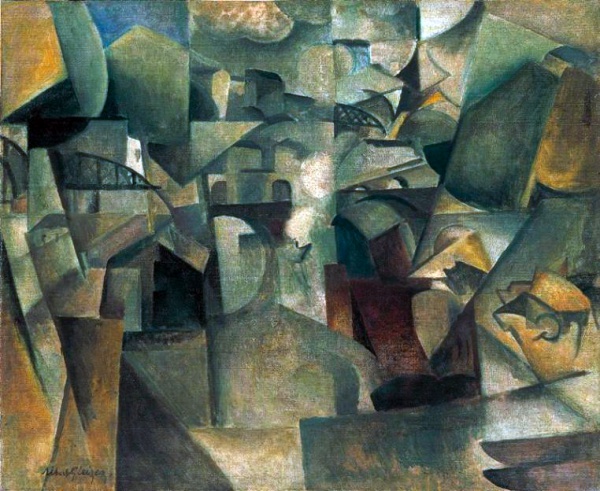Facts About Passy, Bridges of Paris
"Passy, Bridges of Paris" also known as "Les ponts de Paris" and occasionally "Paysage à Passy" is a captivating painting by French artist Albert Gleizes, created in 1912. This piece has been showcased in notable exhibitions in Paris, Berlin, and Prague. It belongs to a series Gleizes worked on between 1912 and 1913, all featuring urban landscapes with bridges.
In "Passy" Gleizes fully embraced the Cubist style, moving away from traditional perspectives. He employed multiple viewpoints and fragmented planes to create a dynamic composition. This approach challenges the conventional ideas of spatial depth and draws inspiration from the theories of mathematician Henri Poincaré on space in art.
Today, "Passy" is housed at the Museum Moderner Kunst (mumok) in Vienna. The painting is thought to symbolize the camaraderie among the "Artists of Passy" a group of avant-garde artists that included Gleizes and Metzinger. The piece marks a departure from classical Euclidean geometry, favoring a more subjective and abstract depiction of space.
Gleizes' work delves into the philosophical and theoretical foundations of Cubism, exploring concepts such as relativity, memory, and the rejection of fixed viewpoints. The treatise "Du 'Cubisme'" co-authored by Gleizes and Metzinger, significantly influenced the ideas behind paintings like "Passy."
The distinction between different branches within the Cubist movement is also highlighted, contrasting Salon Cubists like Gleizes and Metzinger with Gallery Cubists such as Picasso and Braque. The formation of groups like "Les Artistes de Passy" marked a period of collective artistic experimentation and growth within Cubism.
Furthermore, the significance of exhibitions where "Passy" was displayed underscores its role in the evolution of Cubism and its impact on the art world. The painting's depiction of modern cityscapes and its innovative spatial representation continue to be celebrated and studied today.

 Slovenia
Slovenia